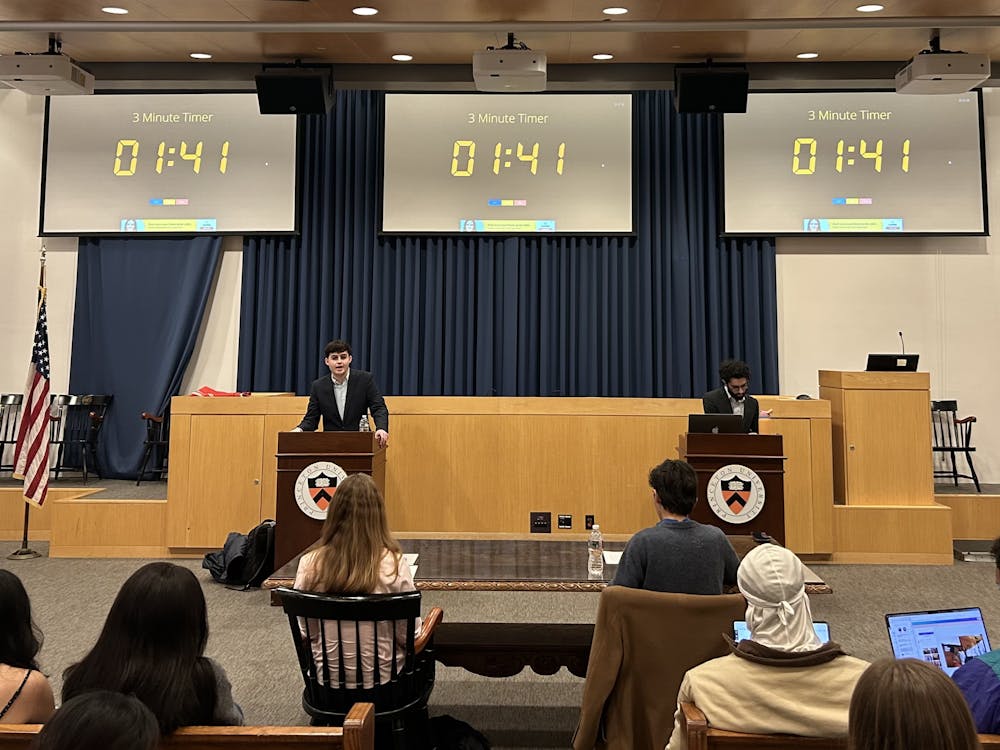My early morning walk to work can include the whole length of Prospect between Harrison and Washington Road, and this morning I found myself relapsing into a habit suspended for some half century. Like other children before and since I often sought to relieve tedium by playing a silent game in which one sought to travel as far as possible along a sidewalk without ever treading on the seams demarking its cement segments. "Step on a crack/ you break your mother's back." I might call this game "mindless," but in fact it demands thought and attention to sustain the odd discipline of an enforced awkwardness of gait, and constantly to impinge upon the instinctive regularity of a walking stride. Inattention or distraction for even a few strides could easily end you up on a crack.
As we know from "Tristram Shandy" if not from John Locke directly, the human mind associates ideas in strange ways. I see in today's "Times" that a high-ranking Iraqi official says American bombers are intentionally targeting the civilian population. That is not an idea that many of us would like to think about, but the mess we are in demands that we think, and think hard, about all sorts of unpleasant things. According to www.iraqbodycount.org, which has been trying to make an accurate account of the number of civilian deaths caused by all military violence in the current hostilities in Iraq, there have been as I write, after a week of heavy bombing and often intense ground combat, at least 253 civilian fatalities and perhaps as many as 333. The website is not without a point of view, but it has established credible and responsible criteria for its calculations, and I have no reason to suspect them, or to doubt that they could be doubled by the time this is printed.
The number is horrific. Any number would be horrific. A single violent death is horrific for anyone claiming to hold human life in value, and especially horrific for those who must sustain the immediacy of its loss. Yet even the horrific can be quantified, after a fashion, and what can be quantified can also be qualified. The number of civilian deaths in a week's intense bombing in Iraq is roughly equal to the number of people that the Department of Transportation says is killed in automobile accidents in this country in any three-day period.
Does this evidence suggest the intentional bombing of civilians? On April 26, 1937, fighters and bombers of the German Condor Legion attacked a small market town in the Basque region of northern Spain, Guernica. Their ostensible target was a modest stone bridge that, after the raid, was one of relatively few edifices still standing in the town, which was largely destroyed. Though appallingly destructive by the standards of the time, the total payload of the German planes was picayune when compared with the tremendous explosive power thus far expended by American weaponry, smart and dumb combined. Everything about the Guernica raid was controverted, including the number of people slaughtered; but the figures supplied by the Basque government were 1,646 dead and 889 wounded, in three hours.
To invoke Guernica is to conclude that the Anglo-American bombing of Baghdad, with vastly greater destructive power unleashed above a vastly larger population, has on the contrary been amazingly precise and discriminate. We have stepped on very few cracks. Alas, that is a fact with limited powers to console Iraqi orphans. Unfortunately, when it comes to bombs, you need step on only a single crack to break some real mother's back.
Historians are in reasonable agreement as to why we remember Guernica today. As one of them writes, "It is curious to reflect that without Picasso's "Guernica" the raid might have become just one more episode in the list of 'fascist' atrocities." Picasso's "Guernica" is probably the most famous painting since the "Mona Lisa," and certainly one of history's most potent productions of political propaganda. The huge original, long housed in New York, was at last taken to Spain after the death of Franco, but since 1985 a kind of tapestry facsimile of "Guernica" has hung in the United Nations building in New York. When American diplomats talked tough there recently, our public relations people had to make sure that it was covered over by a kind of giant antimacassar. Their concern was the Lockean association of ideas, of course. If we need to resort to that kind of a cover-up, rebutting false charges of covering up civilian atrocities is probably already too late. What happens is important, but what people think happens can on occasion be more important still. We perhaps have more reason to be confident of the smarts of our bombs than those of our bombers. "O wad some Pow'r the giftie gie us," wrote sweet Robbie Burns, "To see oursels as others see us!"
John V. Fleming is the Louis W. Fairchild '24 Professor of English.







